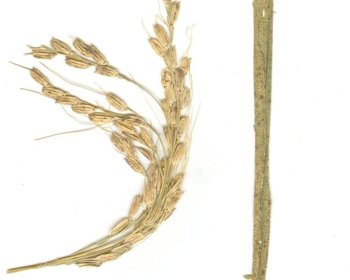Diseases
Ascochyta oryzae Catt. - Ascochyta Leaf Spot.
Systematic position.
Division Deuteromycota, order Sphaeropsidales, family Sphaeropsidaceae, genus Ascochyta.Biological group.
Hemibiotrophic parasites.Synonyms.
Phomopsis oryzae-sativae Punith.Morphology and biology.
Spots on leaves are small, grayish with dark ring. Within the spots under epidermis there are numerous dark dots of pycnidia. Pycnidia are immersed. Spores hyaline or yellowish, oblong or cylindrical, rounded at the ends, with one septa, 16-21x4-5.. The fungus is overwintering on infected seeds and residues. In phase of vegetation the distribution of the disease happens by spores.Ecology.
The development of Ascochyta Leaf Spot is favored with wet weather.Distribution.
Everywhere in zones of cultivation of rice, with higher incidence of the disease in the Far East.Economic significance.
Yield losses in epiphytoty years can reach 10% and more. At high wetting of seeds the fungus intensively grows and decreases the seed germinating capacity. Control measures include autumn plowing with closing up residues at depth of no less than 5 cm; eradication or composting of residues, seed dressing before sowing by fungicides.Sources of data.
Dorofeeva L.L., Kodyakov A.A., Kratenko V.P., Lebedev M.B., Motovilin A.A. & Tikhonova N.A. 1992. Fungi diseases of rice. Tashkent: FAN. 94 p. (in Russian).Egorova L.N. & Oksenyuk G.I. 1989. Micoflora of rice in Primorskii Territory. In: Plant protection in the Far East. Vladivostok: Dalnevostochnoe branch of Academy of Science of SU: 66-71. (in Russian).
Peresypkin V.F. 1987. Diseases of rice. In: Peresipkin V.F., ed. Atlas of crop diseases. Kiev: Urozhai: 61-64. (in Russian).


